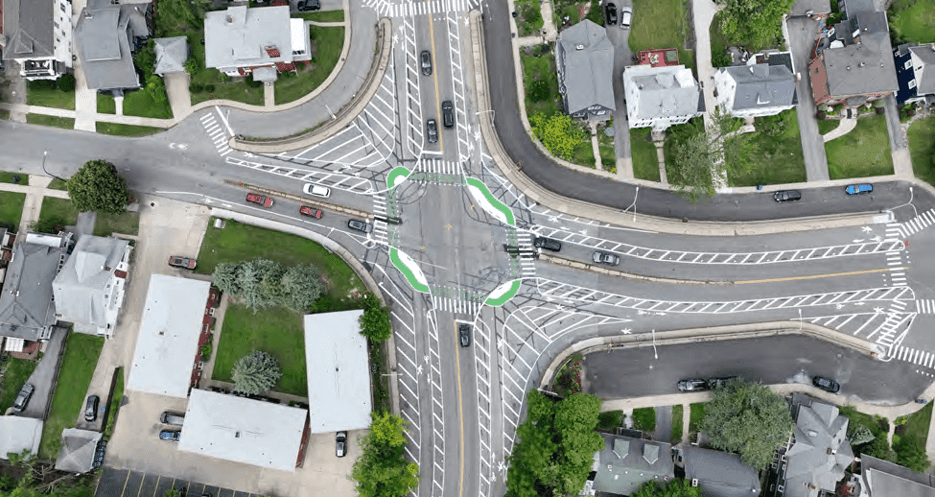
News
By Dustin Robertson, May 30, 2024
The number of people hit and killed while walking in Buffalo, New York has decreased by 50 percent since 2018, thanks to the efforts of local advocates and city officials to prioritize safety over speed.

Buffalo has a long history of traffic violence. A number of historical, geographical, and design factors have created dangerous conditions for anyone trying to move around the city without a car. However, according to the most recent data, the number of fatalities in the city has decreased by half, from 20 in 2018 to 10 in 2022. When the majority of the largest metro areas showed increases in pedestrian death rates, the fact that Buffalo is moving in the right direction is a big deal.
What is responsible for Buffalo’s move in the right direction?
- Prioritization of Safety Over Speed: Since 2019, the city has been implementing a “Slow Streets” program that adds speed humps to slow the speed of vehicles. The speed humps are added neighborhood-by-neighborhood and are designed to accommodate snow plows, an essential feature of Buffalo winters.
- A Targeted Approach: The city has been working to improve conditions in certain problematic areas identified, such as intersections on Main Street/Humboldt Parkway/Kensington Avenue, as well as addressing some of the historic injustices that have occurred through transportation development in the city.
- Collaborations and Partnerships: In many cases, the government has been pushed by and partnered with community members and advocates such as GObike Buffalo. Beginning in 2021, GObike Buffalo partnered with the Greater Buffalo Niagara Regional Transportation Council, the City of Buffalo, and the Erie County government to create the first protected intersection in Western New York as part of the Parkside-Linden Healthy Streets Initiative. The initiative significantly decreased the overall percentage of speeding vehicles (62% to 30%) and also increased pedestrian and bicyclist activity in the area (130% & 141% respectively).
What’s Next
Buffalo, like all American cities, still has a long way to go before it reaches its goal of completely eliminating traffic violence. However, recent federal funding may help improve transportation and safety. The city has received $102 million to build a bus rapid transit corridor on the East Side and $55 million to cap parts of the Kensington Expressway through the Reconnecting Communities Program. While most cities are locked into car dependence and are becoming more unsafe, Buffalo is one place that seems to be heading in the right direction.
Related News

© 2025 Smart Growth America. All rights reserved
Site By3Lane Marketing












